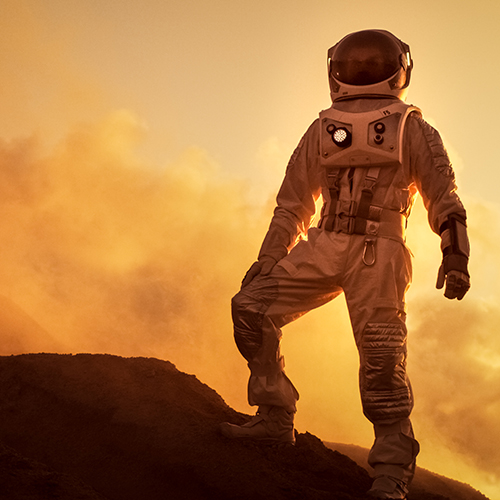19 March 2024
 A manned mission to Mars: it’s the next step in the global space race. But while agencies scurry to take pole position, UniSA experts say the innovations that will help us land the red planet are far more likely to come from next generation of STEM stars in schools.
A manned mission to Mars: it’s the next step in the global space race. But while agencies scurry to take pole position, UniSA experts say the innovations that will help us land the red planet are far more likely to come from next generation of STEM stars in schools.
To encourage more students in STEM, the University of South Australia is calling for Australian schools to sign up for the first national STEM Innovation Experience (STEMIE), a competition that embraces science, technology, engineering, and mathematics (STEM) in a range of complex and diverse projects.
It’s a vital initiative that’s addressing the importance of STEM to Australia’s future.
In Australia, school students’ science and maths results are declining or stagnating, with our global rankings slipping as other countries improve.
Open for students in years 9-11, STEMIE has three major components: a learning phase where students solve STEM-focussed problems; the regional showcase where a representative student team is judged on their project; and the national STEMIE final where students compete in a series of unseen challenges only revealed on the day.
Education Outreach Officer UniSA’s Anita Trenwith says STEMIE not only excites students about STEM, but also highlights the breadth of STEM opportunities across a range of diverse industries.
“Whether it’s investigating human physiology for a long-haul astronaut mission or understanding the risks associated with extreme weather events and fires, there is always an aspect of STEM,” Trenwith says.
“When we think about a space mission, it’s obvious that people working in that industry will need skills in STEM. But when we look at other sectors such as the movie business, it isn’t always that clear cut.
“Look behind the camera and you’ll find many aspects align with STEM: special effects need an understanding of science; shooting on location requires production costs; and animating logos requires coding expertise – all these use STEM skills.
“Through STEMIE, students apply STEM skills in real-world situations. They’re presented with key problems in a chosen area – event management, space exploration, movie production, disaster management, or control of mineral resource – and they are challenged to solve themed tasks.
“In doing so, they learn how STEM skills are truly varied and necessary in sectors that they may not have otherwise considered, which presents new opportunities for them for the future.”
The STEMIE program aligns with the school curriculum, enabling schools and teacher to easily integrate content into the classroom.
Depending on the chosen theme, the content can be linked to chemistry, physics, integrated studies or scientific studies at Stage 1 (year 11), or into year 9 and 10 science, maths and technology classes. It can also be facilitated as an extra-curricular class to cater for an extension or special interest group in the same way some schools might have after school or lunch time sport sessions.
Already more than 300 students across South Australia, Victoria, Tasmania and the ACT have enrolled in STEMIE with round one offers due to close on Friday 29 March 2024.
“STEM is incredibly important for Australia’s future. Whether it’s addressing climate change, or managing mental health, our future breakthroughs will affect millions of people around the world,” Trenwith says.
“Fostering the next generation’s interest and enthusiasm in STEM is critical. And that’s just what we’re aiming to do through STEMIE.”
Notes to editors:
- This year’s STEMIE offers five themed topics:
- Revolutionary Resources: how humans manage resources and manage energy production while balancing environmental requirements.
- Mission to Mars: developing a proposal for the Mars Mission, including designing and constructing an automated vehicle and transit pod.
- Carnival Capers: planning and running a carnival, developing a ticket entry system, and budgeting to make a profit from the event.
- Movie Magic: producing a three-minute movie, including aspects of pre- and post-production, company branding, and applying for financial backing.
- Flood! Fire! Famine! natural disaster management, including fire management techniques, prototyping a flood mitigation system, and creating a chicken egg collection device.
- Video footage available: the themed ‘STEMIEana Jones’ final from the 2023 STEMIE Finals: NC26169 (25118): 2023 STEMIE Final "STEMIEana Jones" | learnonline (unisa.edu.au)
…………………………………………………………………………………………………………………………
Media contact: Annabel Mansfield M: +61 479 182 489 E: Annabel.Mansfield@unisa.edu.au
UniSA spokesperson: Anita Trenwith E: Anita.Trenwith@unisa.edu.au




